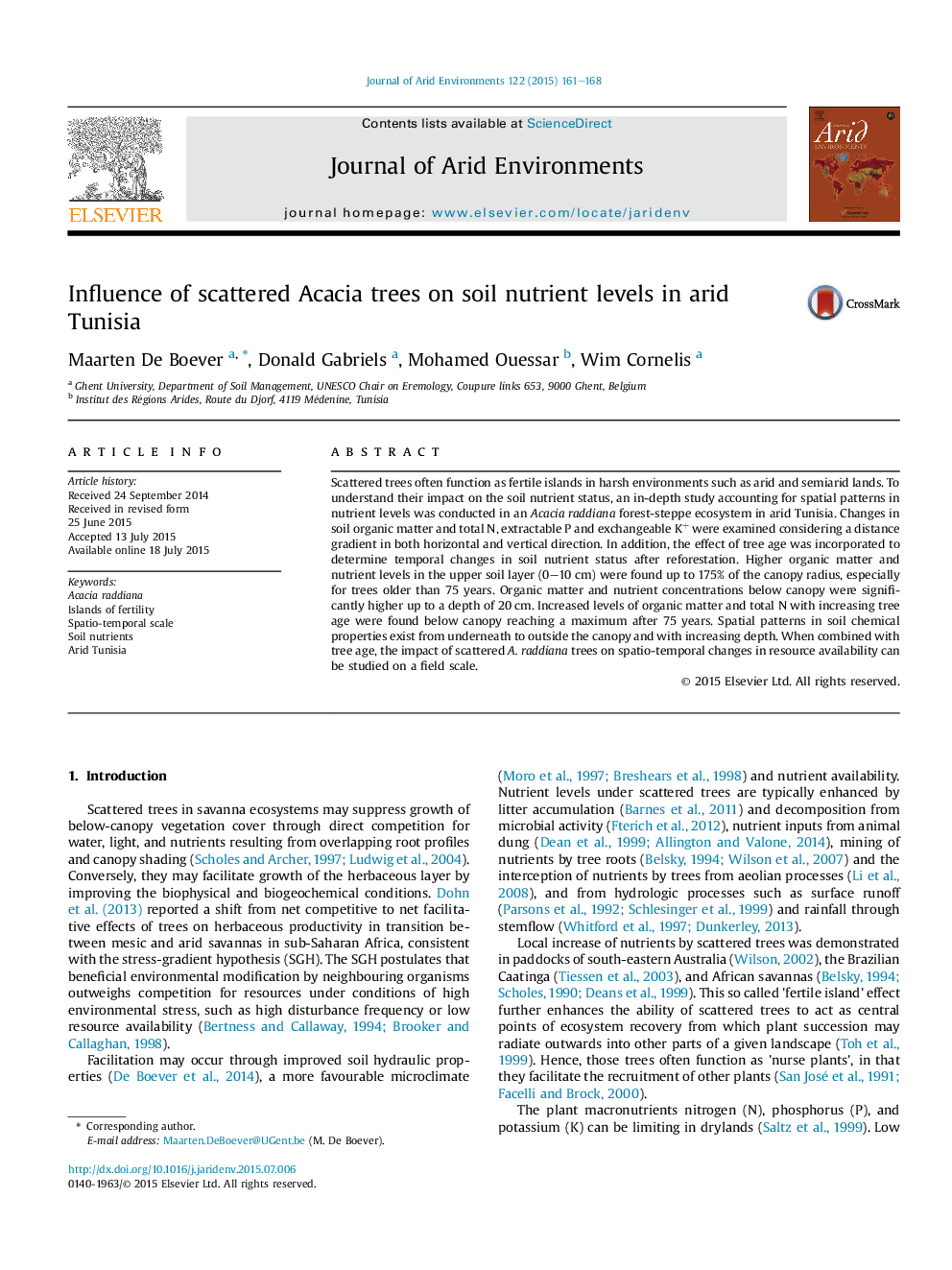| Article ID | Journal | Published Year | Pages | File Type |
|---|---|---|---|---|
| 6303288 | Journal of Arid Environments | 2015 | 8 Pages |
Abstract
Scattered trees often function as fertile islands in harsh environments such as arid and semiarid lands. To understand their impact on the soil nutrient status, an in-depth study accounting for spatial patterns in nutrient levels was conducted in an Acacia raddiana forest-steppe ecosystem in arid Tunisia. Changes in soil organic matter and total N, extractable P and exchangeable K+ were examined considering a distance gradient in both horizontal and vertical direction. In addition, the effect of tree age was incorporated to determine temporal changes in soil nutrient status after reforestation. Higher organic matter and nutrient levels in the upper soil layer (0-10 cm) were found up to 175% of the canopy radius, especially for trees older than 75 years. Organic matter and nutrient concentrations below canopy were significantly higher up to a depth of 20 cm. Increased levels of organic matter and total N with increasing tree age were found below canopy reaching a maximum after 75 years. Spatial patterns in soil chemical properties exist from underneath to outside the canopy and with increasing depth. When combined with tree age, the impact of scattered A. raddiana trees on spatio-temporal changes in resource availability can be studied on a field scale.
Related Topics
Physical Sciences and Engineering
Earth and Planetary Sciences
Earth-Surface Processes
Authors
Maarten De Boever, Donald Gabriels, Mohamed Ouessar, Wim Cornelis,
